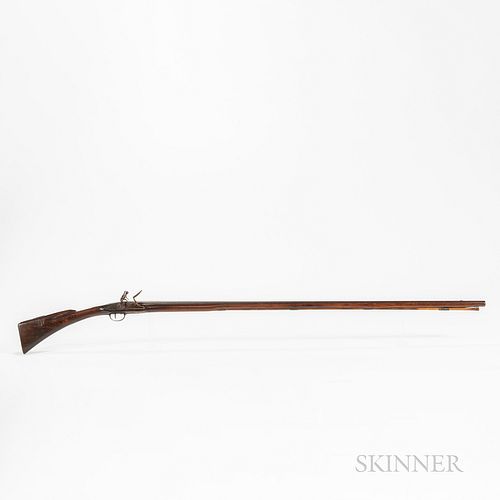New England Fowler
Lot 84
About Seller
Bonhams Skinner
274 Cedar Hill Street
Marlborough, MA 01752
United States
Founded over four decades ago, Bonhams Skinner offers more than 60 auctions annually. Bonhams Skinner auctions reach an international audience and showcase the unique, rare, and beautiful in dozens of categories, including the fine and decorative arts, jewelry, modern design, musical instruments, sc...Read more
Categories
Estimate:
$4,000 - $6,000
Absentee vs Live bid
Two ways to bid:
- Leave a max absentee bid and the platform will bid on your behalf up to your maximum bid during the live auction.
- Bid live during the auction and your bids will be submitted real-time to the auctioneer.
Bid Increments
| Price | Bid Increment |
|---|---|
| $0 | $10 |
| $100 | $25 |
| $500 | $50 |
| $1,000 | $100 |
| $3,000 | $250 |
| $5,000 | $500 |
| $10,000 | $1,000 |
| $30,000 | $2,500 |
| $50,000 | $5,000 |
| $100,000 | $10,000 |
| $300,000 | $25,000 |
| $500,000 | $50,000 |
| $1,000,000 | $100,000 |
About Auction
By Bonhams Skinner
Oct 29, 2021
Set Reminder
2021-10-29 10:00:00
2021-10-29 10:00:00
America/New_York
Bidsquare
Bidsquare : Historic Arms & Militaria
https://www.bidsquare.com/auctions/skinner/historic-arms-militaria-7693
The William Rose collection features nearly 180 lots of rare and important 17th & 18thc. muskets, bayonets, pistols, swords, powder horns, accoutrements and documents used by British, French, and American forces who served in America's colonial wars and American Revolution. Bonhams Skinner bidsquare@bonhamsskinner.com
The William Rose collection features nearly 180 lots of rare and important 17th & 18thc. muskets, bayonets, pistols, swords, powder horns, accoutrements and documents used by British, French, and American forces who served in America's colonial wars and American Revolution. Bonhams Skinner bidsquare@bonhamsskinner.com
- Lot Description
New England Fowler, likely Worcester County, Massachusetts, c. 1770, 50 1/4 in., .56 caliber round barrel with brass blade sight and top flat extending all the way to the muzzle; single bridled flat French lock with rococo and foliate engraving on the plate and cock; cherry stock with roman nose and deeply concave butt tock, the butt with carved initials "JF" on the right side, narrow carved plateau around the breech plug tang with raised foliate carving below; brass furniture including a French-style butt plate with line engraving around the edge, cloud-style side plate with simple shell engraving around the rear hole and double line engraving around the border, trigger guard with flame finial and shell engraving on the bow, and four plain brass rammer pipes; convex oval silver thumbpiece with line engraving around the edge; wood rammer with horn tip, overall lg. 66 1/8 in.
Note: While this fowler is unsigned, it stylistically bears all of the principal traits associated with fowling arms made in Worcester County, Massachusetts, including engraved French lock, cloud side plate, French-style trigger guard and silver oval thumbpiece. For an in-depth discussion of Worcester County fowlers see Tom Grinslade, Flintlock Fowlers The First Guns Made in America, American Fowling Pieces from 1700-1820 (Pottsboro, Texas: Crazy Crow Trading Post, LLC, 2005), pp. 27-91.Condition
Condition: Iron toned to a deep brown; brass toned to a dark yellow; cock and steel are replacements; section of forestock from just forward of the second rammer pipe and through the center of the rammer channel to the muzzle, old wood patch on the right of the stock directly above second rammer pipe, the butt has a horizontal wood splice from the corner of the butt plate to the trigger guard that appears to be old; tang on the entry pipe missing.
Any condition statement is given as a courtesy to a client, is only an opinion and should not be treated as a statement of fact. Skinner Inc. shall have no responsibility for any error or omission. The absence of a condition statement does not imply that the lot is in perfect condition or completely free from wear and tear, imperfections or the effects of aging. - Shipping Info
-
Please visit http://www.skinnerinc.com/services/payment-and-shipping/ for information regarding the collection of items purchased at auction.
-
- Buyer's Premium



 EUR
EUR CAD
CAD AUD
AUD GBP
GBP MXN
MXN HKD
HKD CNY
CNY MYR
MYR SEK
SEK SGD
SGD CHF
CHF THB
THB
















